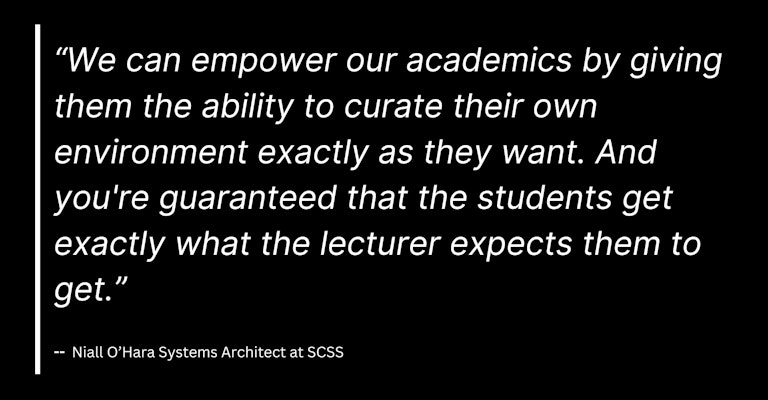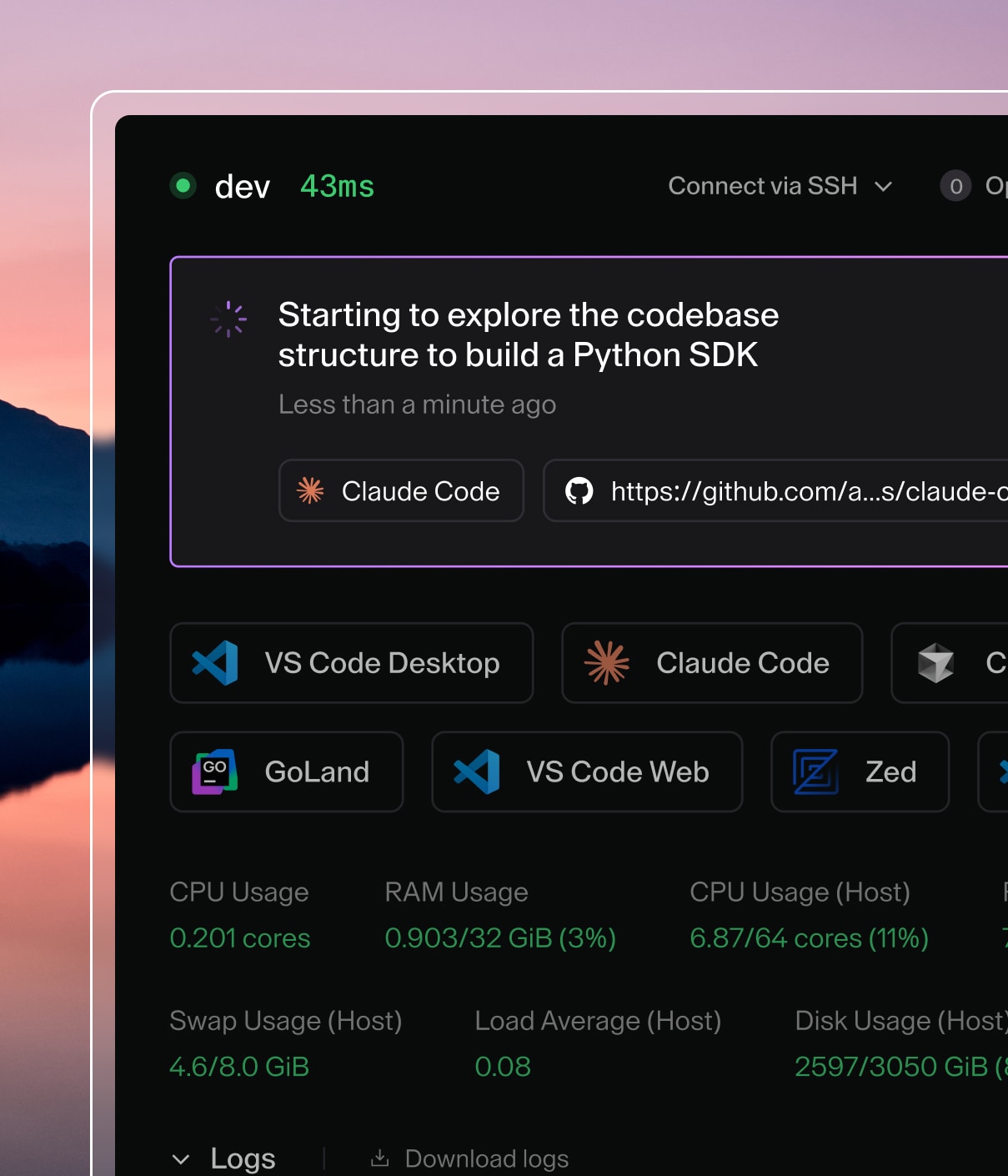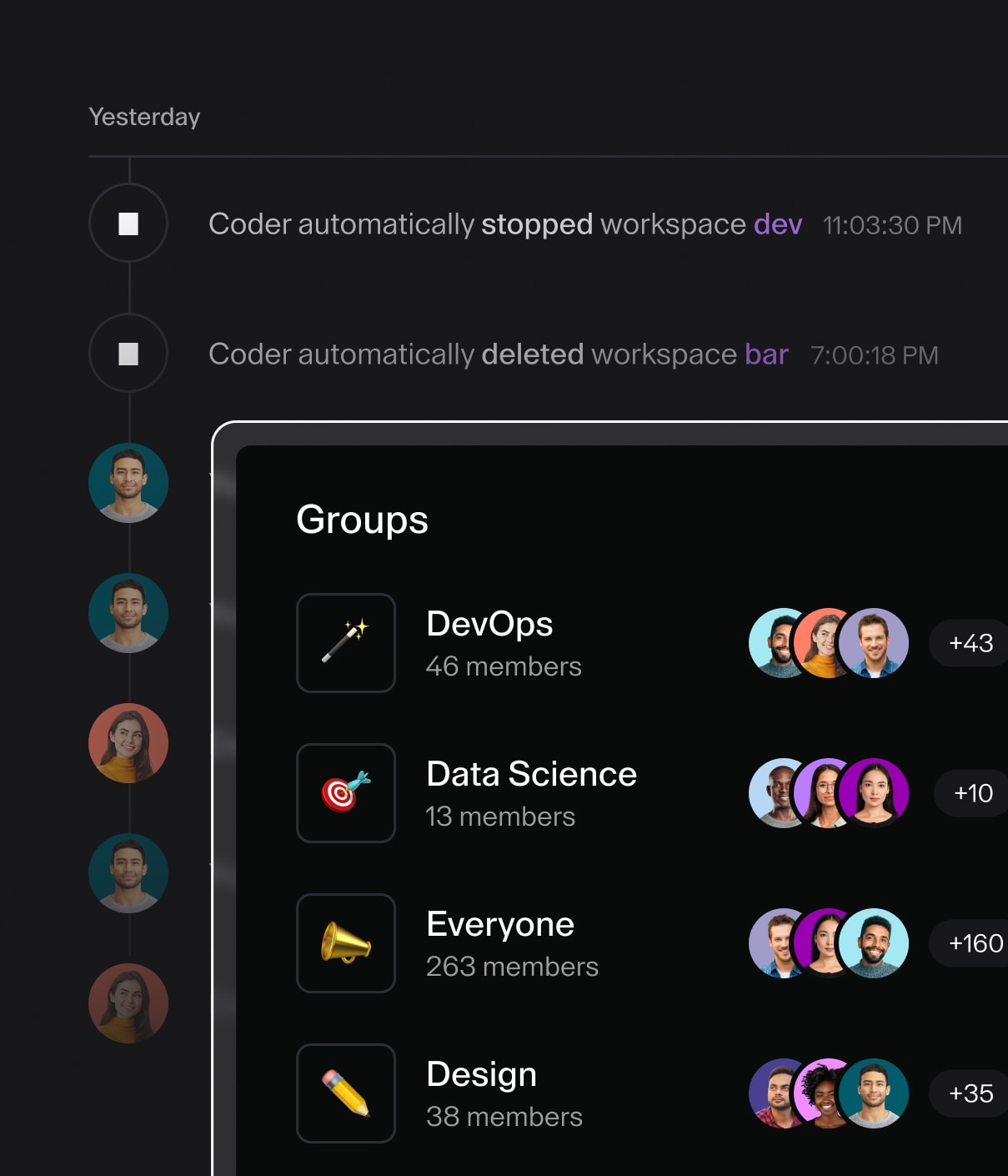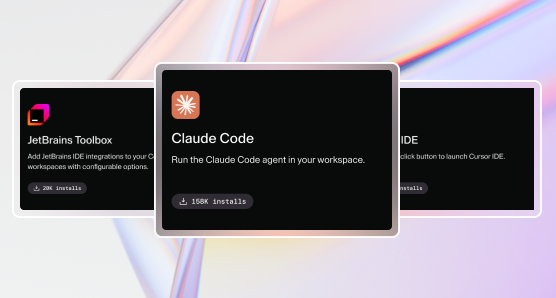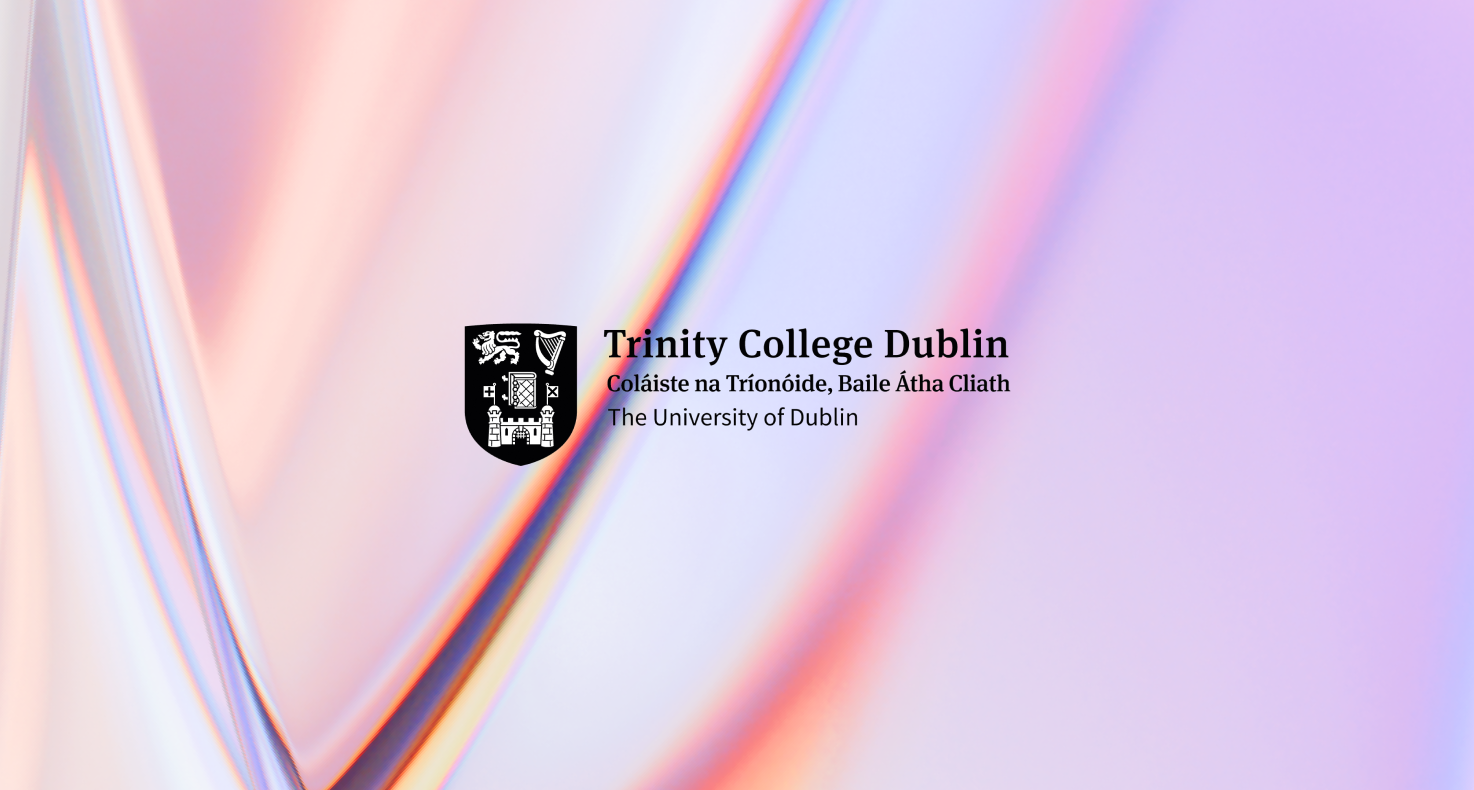
From syllabus to code: getting students up to speed faster
Instructors at Trinity College Dublin are able to devote more time to teaching with less time and effort on setting up students with useful, productive dev environments.
The School of Computer Science and Statistics (SCSS) at Trinity College Dublin is the highest-ranked school of computer science in Ireland. Over 150 academic and research staff teach and perform research in subjects that include AI, graphics, security, statistics, and networking. Niall O’Hara is the Systems Architect at SCSS and a member of the Systems Support Team, which oversees the computing infrastructure for staff and students. Dr Jonathan Dukes, an Assistant Professor at SCSS, was the first to adopt Coder, working closely with the Systems Support Team to integrate it into the school’s infrastructure. What started as an initial deployment has since grown significantly, with over 1,000 students across five courses now using Coder every semester. Given its success, SCSS plans to further expand its adoption in the coming years.
Challenges: Remote learning added complications
When the COVID pandemic struck in early 2020, SCSS was forced to lock down its computer lab. There was a sudden need to support students and staff remotely for their computing needs, including software development. Students no longer had access to the standardized, professionally-administered workstations in SCSS labs. Instead, they used whatever personal laptop, desktop, or even tablet, that was available to them.
Today, even though students have returned to campus labs, they still want the flexibility to work where and when they want and to use their own preferred device. Students should have the same experience whether working remotely or on-campus. When courses have 200 or more students, achieving this places an extra burden on professors, teaching assistants, and support staff. Troubleshooting development environments takes valuable time away from teaching.
Each course has its own dev environment requirements. Before Coder, instructors provided detailed written instructions that covered installation on macOS, Windows, and Linux. Because students come from other majors besides computer science, these instructions couldn’t assume that students have experience with coding or even software installation.
For example, the CS1-level “Introduction to Computing” course has students develop Arm Assembly Language programs while learning about microprocessor systems. While the dev environment for this course isn’t as sophisticated as a professional environment, it still exposes students to industry-standard tools, not simplified software for beginners. Students had to follow a 7-page document to manually install key components including the VS Code IDE, the Arm GNU toolchain, QEMU emulator for ARM, and debugging extensions.
Instructions couldn’t cover all operating system versions and other complications like anti-virus software, so course instructors were left to support students during lab sessions, by email, and in scheduled meetings. This took valuable time away from teaching and learning activities and meant that some students fell behind while they resolved technical issues.
Administering the workstations in the SCSS labs had its own challenges, even before COVID. Each lab workstation had to accommodate several courses, each with their own requirements for IDEs, compilers, build tools, package managers, and other development tools.
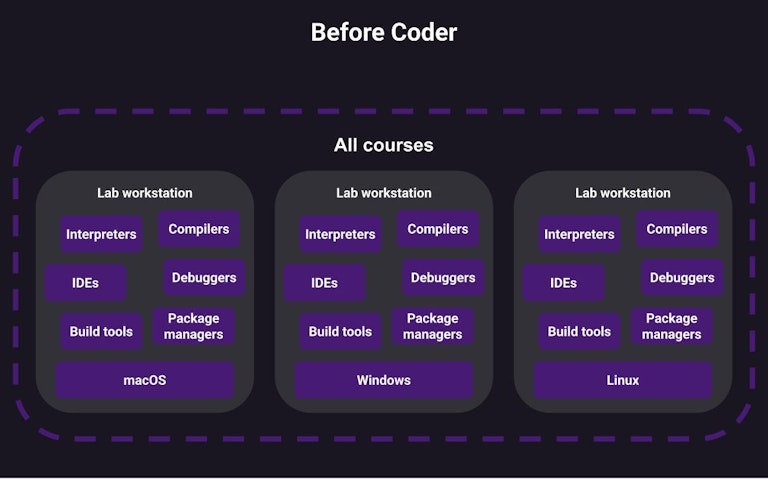
SCSS looked for a solution that would get students up to speed more quickly while flexibly transitioning between campus labs and their own devices:
- Reduce the support effort to enable hundreds of students to study anywhere.
- Reduce the time it takes to get all students up and running with consistent, reliable dev environments.
- Let instructors curate their own dev environments for their courses.
Solution: A flexible alternative to VDI and Docker
SCSS considered a few potential solutions:
- SaaS-based solutions designed for education addressed some of the challenges, but did not provide the flexibility and facility to self-host that SCSS wanted.
- VDI offered another solution but at the cost of increased resource requirements to support hundreds or thousands of students.
- Containers work well on an individual’s workstation, but are difficult to administer in a lab where workstations are shared among students.
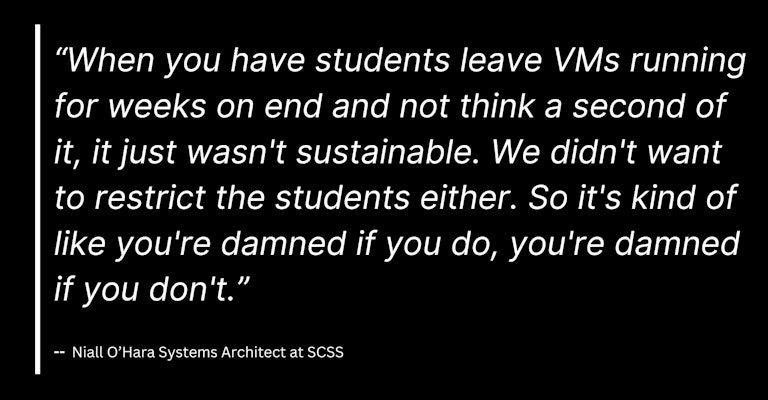
SCSS began by evaluating Coder in a pilot project during the fall 2024 semester in two courses. They deployed Coder in an on-prem data center, which has ample storage and compute capacity to handle SCSS needs, including the 400 students enrolled in the pilot courses.
Coder brings flexibility from supporting a broader range of platforms and tools. SCSS staff define their own dev environments, from simple environments for CS1 level introductory programming to more advanced, specialized configurations. Environments run as Coder workspaces on Windows, Linux, or any other OS that can be provisioned with a Terraform template.
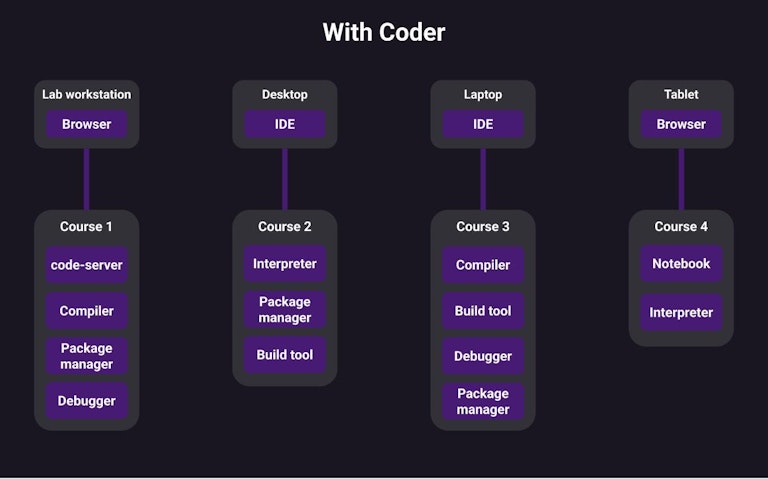
Coder workspaces give students ready-to-use, responsive remote dev environments. Whether working in an SCSS lab or remotely, each student in a course gets an identical environment. Coder gives them the choice of how they interact with their environments, either with a native IDE or with the web browser on their device, which, for students new to coding, is more familiar.
Lab workstations are easier to administer, needing only a browser to give students access to Coder. Coder easily handles the spikes in demand during course lab sessions and exams. In fact, Coder itself is one of the lighter consumers of resources in the data center.
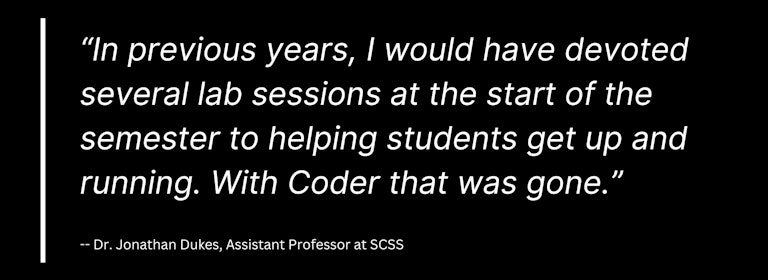
Results: Repeatability, scalability, flexibility, supportability
Since the initial success of the SCSS pilot, other instructors have started using Coder for their courses for a total of about 1000 students per semester. Coder brings benefits to instructors, students and technical support staff:
- Repeatability: Students no longer have to set up and troubleshoot their own environments. Instructors can define and test templates for their own courses and be confident that they will work reliably.
- Scalability: Coder itself consumes relatively few resources even with hundreds of active workspaces. Students get responsive dev environments while using whatever local device they have on hand.
- Flexibility: Coder’s self-management lets SCSS host environments on its own infrastructure to manage the unique requirements for teaching. For example, a Coder template supports “closed book” exams by closing off the workspace’s access to the internet.
Now that Coder has proven that it saves time for students and instructors, SCSS plans to expand Coder’s adoption:
- Templates: Apply more rigorous administration for templates, including putting processes in place to let instructors adapt templates to their own use cases.
- Managing expensive resources: Coder can be the gatekeeper for a new GPU cluster that SCSS plans to add to the data center.
- Devcontainers: Coder’s support for devcontainers will allow SCSS to give students a self-service facility to build and use custom dev environments for open-ended coursework projects, including dissertations.
Conclusion: Coder empowers the next generation of developers
Coder is proving its usefulness not just in enterprise, but in academia, too. With Coder, instructors at the School of Computer Science and Statistics at Trinity College Dublin devote more time to teaching with less effort on setting up students with useful, productive dev environments. And Coder’s scalability and administrative features give SCSS the flexibility to efficiently provide computing resources.
